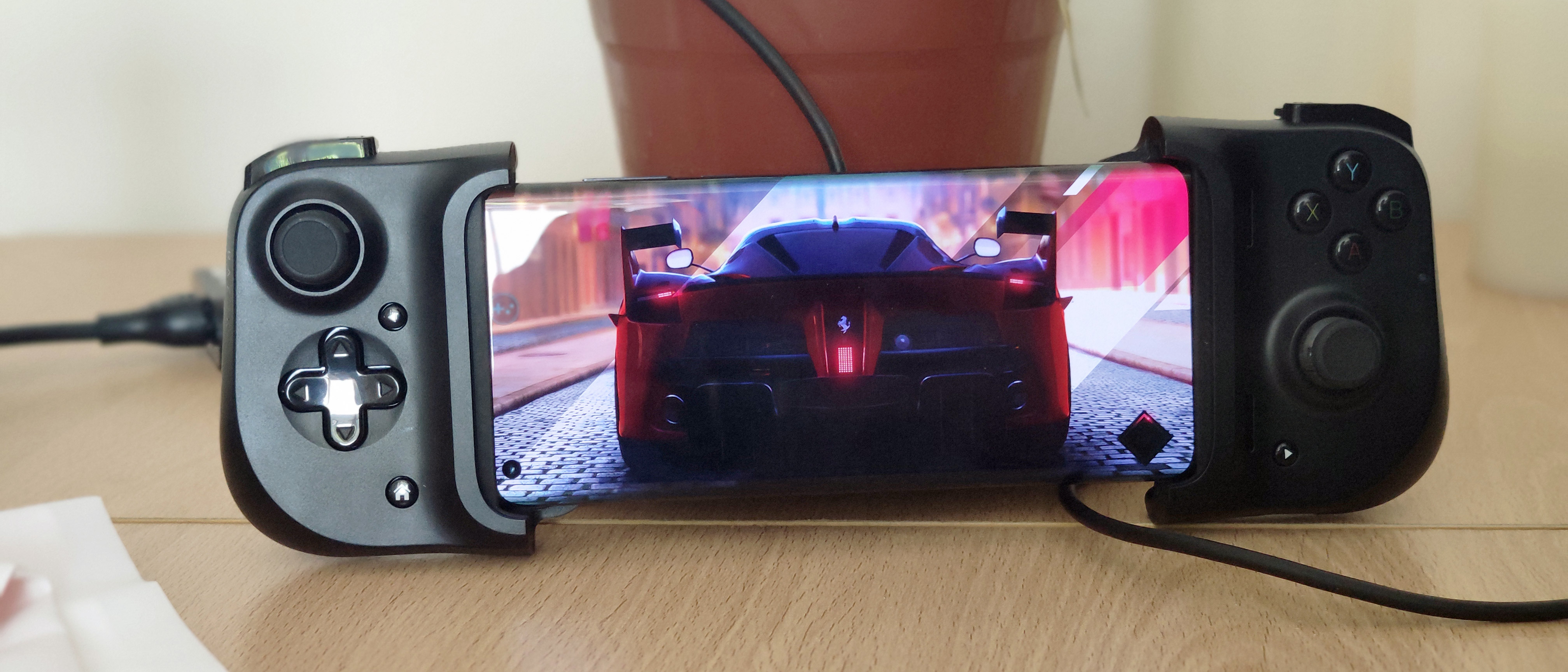TechRadar Verdict
The Razer Kishi solves lots of problems that previous mobile phone gamepads have had, both from Razer and other companies: it’s got two joysticks for versatile gaming, a huge list of phones it’s compatible with, and a simple plug-and-play approach that means you don’t need to map controls for each game. However, the list of games that actually work with Kishi is rather limited, and many of your favorites might not be covered.
Pros
- +
Sturdy build
- +
Works with most phones
Cons
- -
No button-mapping ability
- -
Game compatibility list is short
Why you can trust TechRadar
One-minute review
The Razer Kishi is the next mobile phone gamepad from the gaming-focused company, following the aging Junglecat, and it seems to be designed to be one of the most premium offerings on the market. Its build is solid, it’s got more buttons than many competitors, and its paired app also functions as a game launcher in its own right.
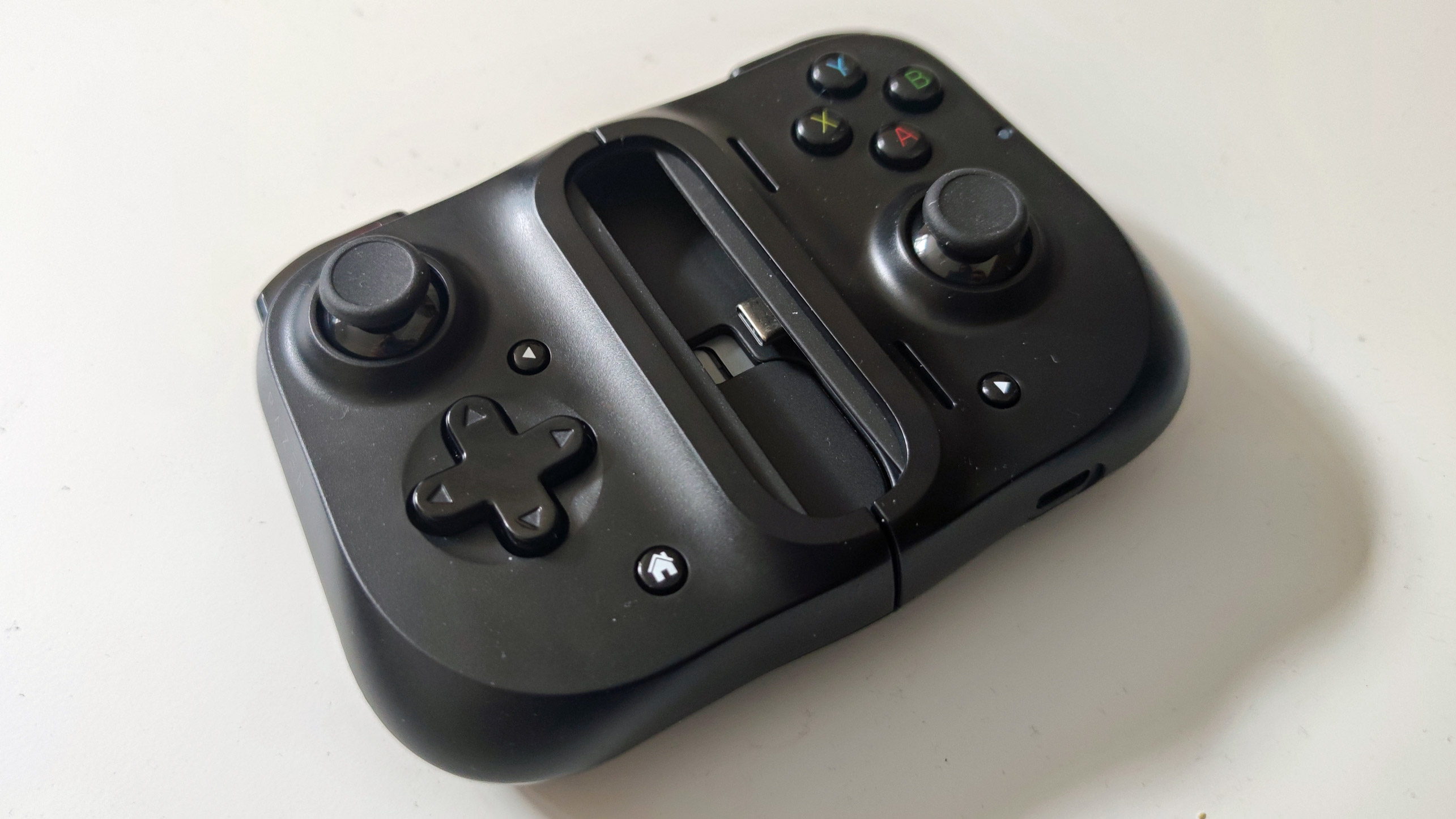
The biggest Junglecat issue the Kishi solves is phone compatibility, as while the older gamepad worked with only a handful of smartphones, the Kishi can clip on to a wide variety of Android smartphones, as long as your phone has a USB-C port. iPhones aren’t compatible yet, although an iOS version of the Kishi is set to be released sometime in mid-2020.
The main issue with the Kishi is, rather ironically, also compatibility, but in terms of games, not handsets. While your Kishi will automatically work on many games, saving you the trouble of mapping the controller yourself (which can be a hassle to do for every new game), the Kishi only works on a select number of games, and you can’t use it on ones that aren’t on the list. It’s probably worth downloading the Razer Gamepad app before buying the Kishi to see which of your favorites are supported, unless you want to use some of the biggest game streaming services which are compatible.
If your top games do work with Kishi, it’s likely a game-changer (literally) that’ll bring your mobile gaming experience much closer to console gaming. If you can’t find your favorites on the list, though, Kishi will be rather redundant, and other more affordable gamepads might be better.
Razer Kishi price and availability
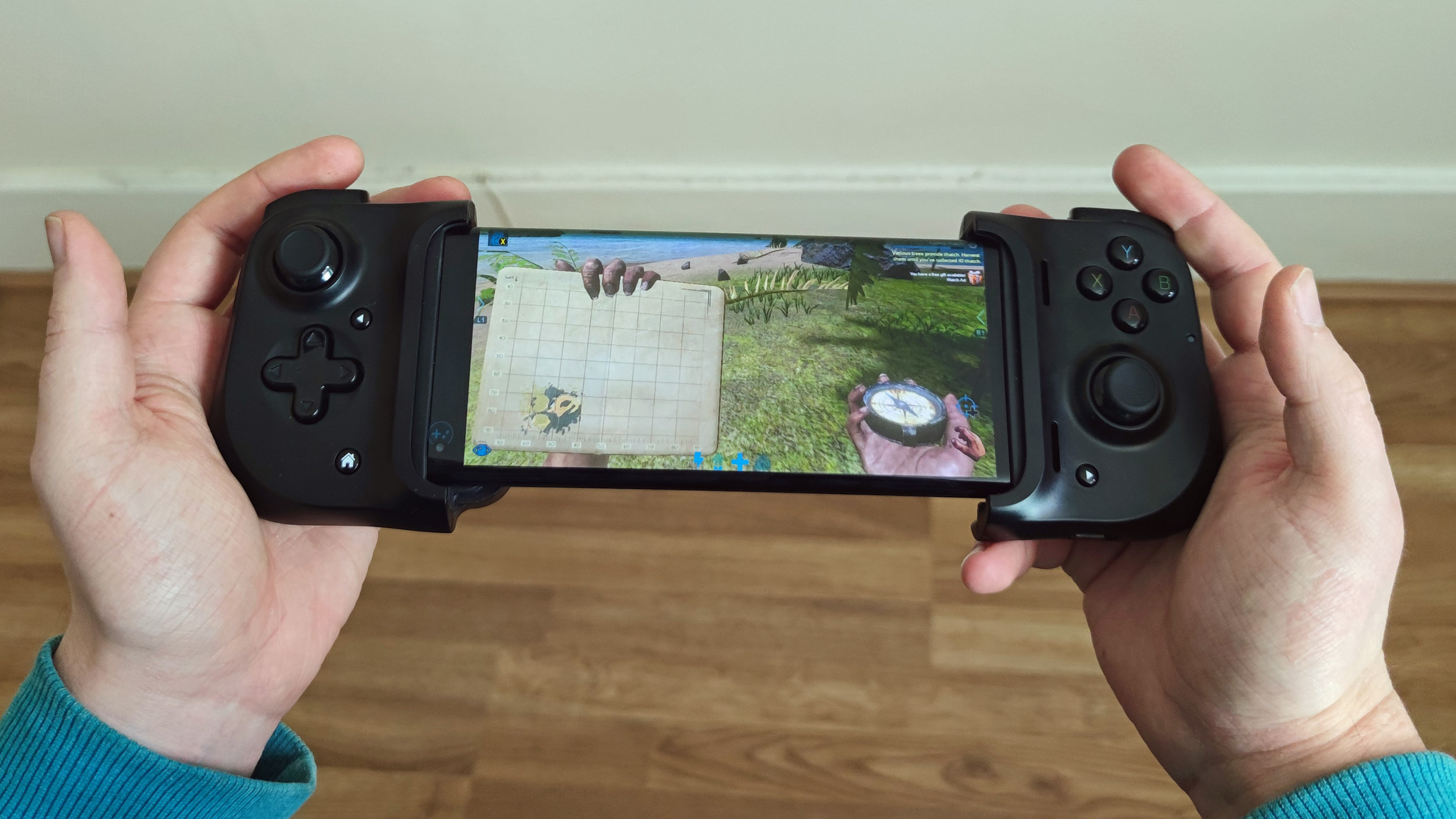
You can buy the Razer Kishi from Razer’s website - at time of writing this is the only place you can pick up the gamepad.
The Razer Kishi price is $79.99 / £79.99 (roughly AU$115), although given precedent we wouldn't expect it to be available in Australia. The Android-compatible version of Kishi went on sale on June 9, 2020, with an iOS-compatible model set for release some time in mid-2020.
At this price, the Kishi is actually more affordable than its predecessor the Junglecat, which went for $99.99 / £99.99 (about AU$150, although it didn’t make its way to Australia). That said, there are plenty of cheap mobile gamepads you can buy online for much less than the Kishi.
Black Shark and Red Magic, two companies which make gaming smartphones, sell gamepads for around the same price as the Kishi.
Design
The Razer Kishi consists of a left and right gamepad, but unlike many phone controllers that consist of two separate controller halves, the Kishi’s halves are connected with elastic to a central retaining plate that fits behind the phone. This makes sure the gamepads are attached snug when connected to a phone, and when not in use, you can bundle everything up into a portable block.

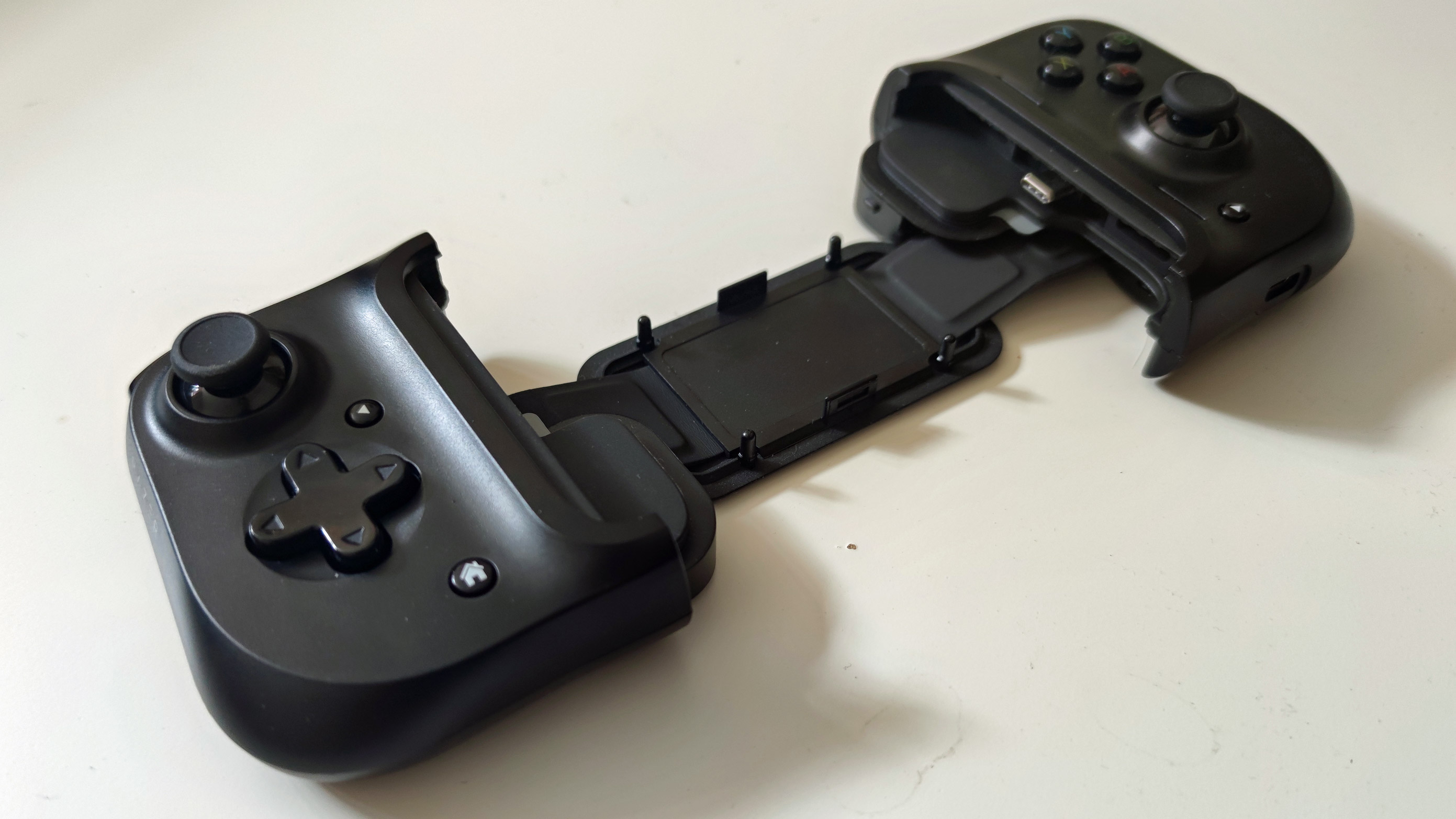
Like all gamepads, the Razer Kishi has a plastic body, and because of this it’s very light. Attaching it to a phone didn’t add much extra heft to the handset , and we could easily tuck it into a pocket when it wasn’t in use without it overburdening us.
The left half of the Razer Kishi has a joystick placed toward the top and a D-pad below (like an Xbox controller), as well as a home button, another function button and two triggers. The right half has the same two triggers, a lower joystick, another function button and four ‘face’ buttons, again using the X, Y, A and B of Xbox.
Given how most phones have speakers on their bottom edge, the Kishi’s right side has small vents for sound to pass through, as well as a USB-C connector that you plug into phones to connect the gamepad, and a USB-C port so you can charge your phone while you’re gaming (although you can’t charge the gamepad itself. It’s also worth pointing out the joysticks are clickable, for even more controller functionality.
The Razer Kishi connects to phones via the aforementioned USB-C connector, and you have to stretch the other half of the gamepad onto the top of your phone to click the controller into USB-C ports. The Kishi fit most phones we put in it - both the Xiaomi Mi 10 Pro, which is fairly thick, and Motorola Edge, which is rather long, fit snugly into the body. The Black Shark 3 was too chunky to fit, as it’s over 1cm thick, but very few phones are as broad as this, so most will fit. The Samsung Galaxy S20 Ultra is too long to fit, at 16.7cm length, but again this is one of the biggest phones available.
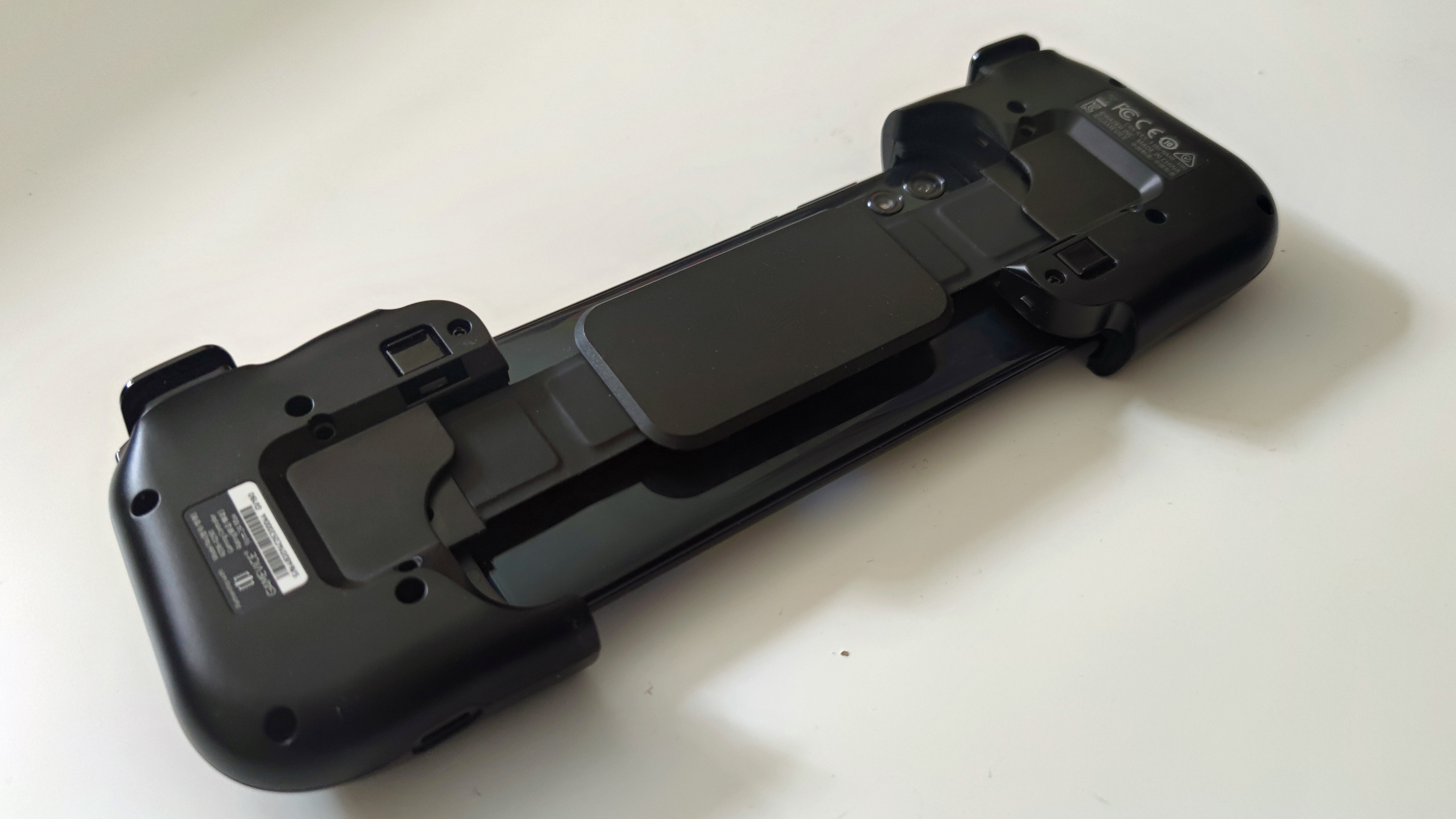
When the Kishi is attached to a phone, it feels supremely sturdy and rigid - neither side wobbles at all, likely thanks to the connector plate or the pads on each side of the device which hold the phone. Neither side feels at risk of slipping off either, and the Kishi feels as reliable and hardy as any PlayStation or Xbox controller.
Gaming
Most smartphone gamepads require you to physically map the controls to points on the display, which typically correspond to buttons in-game, so you dictate where the smartphone ‘thinks’ you’re pressing when you’re actually pushing the controller’s physical button. The Kishi’s strength, and its weakness, is that this isn’t the case.
For the Razer Kishi, compatible games have pre-baked control schemes that work with the gamepad, so you can simply plug it in and start playing.
The list of compatible games can be found by downloading Razer’s ‘Gamepad’ app, and includes top games like ARK: Survival Evolved, Asphalt 9 Legends, Star Wars: Knights of the Old Republic, Goat Simulator and many more games. The app lets you know which of the games you already have downloaded work, and easily lets you jump into the Google Play Store to download more.
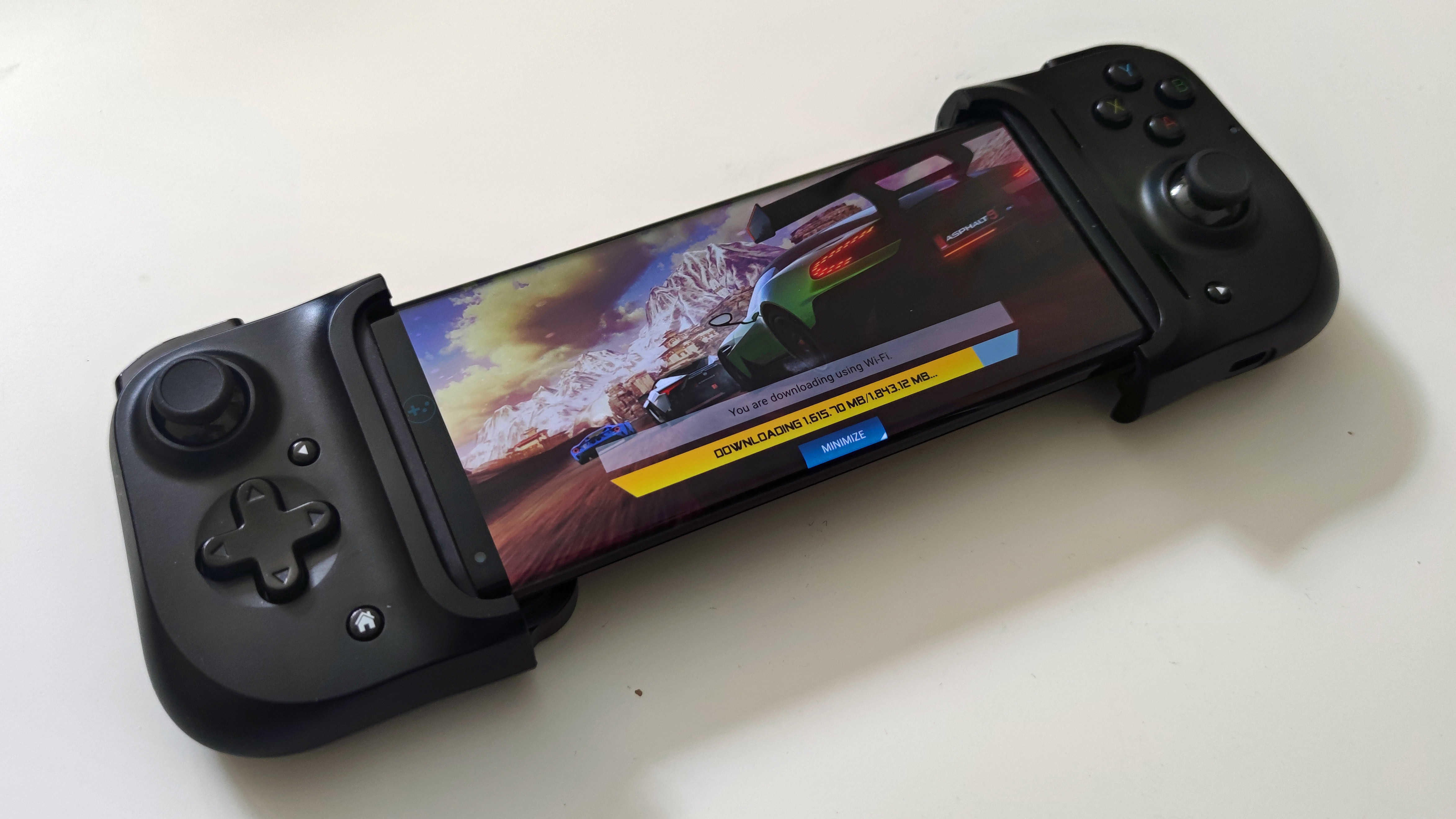
While it’s great to skip the whole ‘button mapping’ process, the downside is that many popular games aren’t compatible with Kishi, including many of the biggest titles you’d want. Call of Duty: Mobile, PUBG: Mobile, Fortnite and Infamous: Gods Among Us aren’t compatible, for example, and there’s no way of creating your own control schemes either, so these games just don’t work with Kishi.
It’s a real shame that Kishi only works on certain games and not others, since if you’re a fan of the incompatible games (as you likely are, as they’re some of the biggest titles around), you just can’t use the gamepad. This is an issue that may be solved down the road, as it seems new games are getting added to the Gamepad app, and it’s possible Razer will allow users to create custom control schemes, and if that happens the Kishi will truly be the must-buy gaming controller.
We should point out that the Razer Kishi also works with certain game streaming services such as Google Stadia, Microsoft’s Project xCloud and Nvidia GeForce Now, and while not all these services are available on all smartphones, when they are this could greatly increase the Kishi’s usability. If these are the services you want to use a gamepad for, it’ll work a treat.
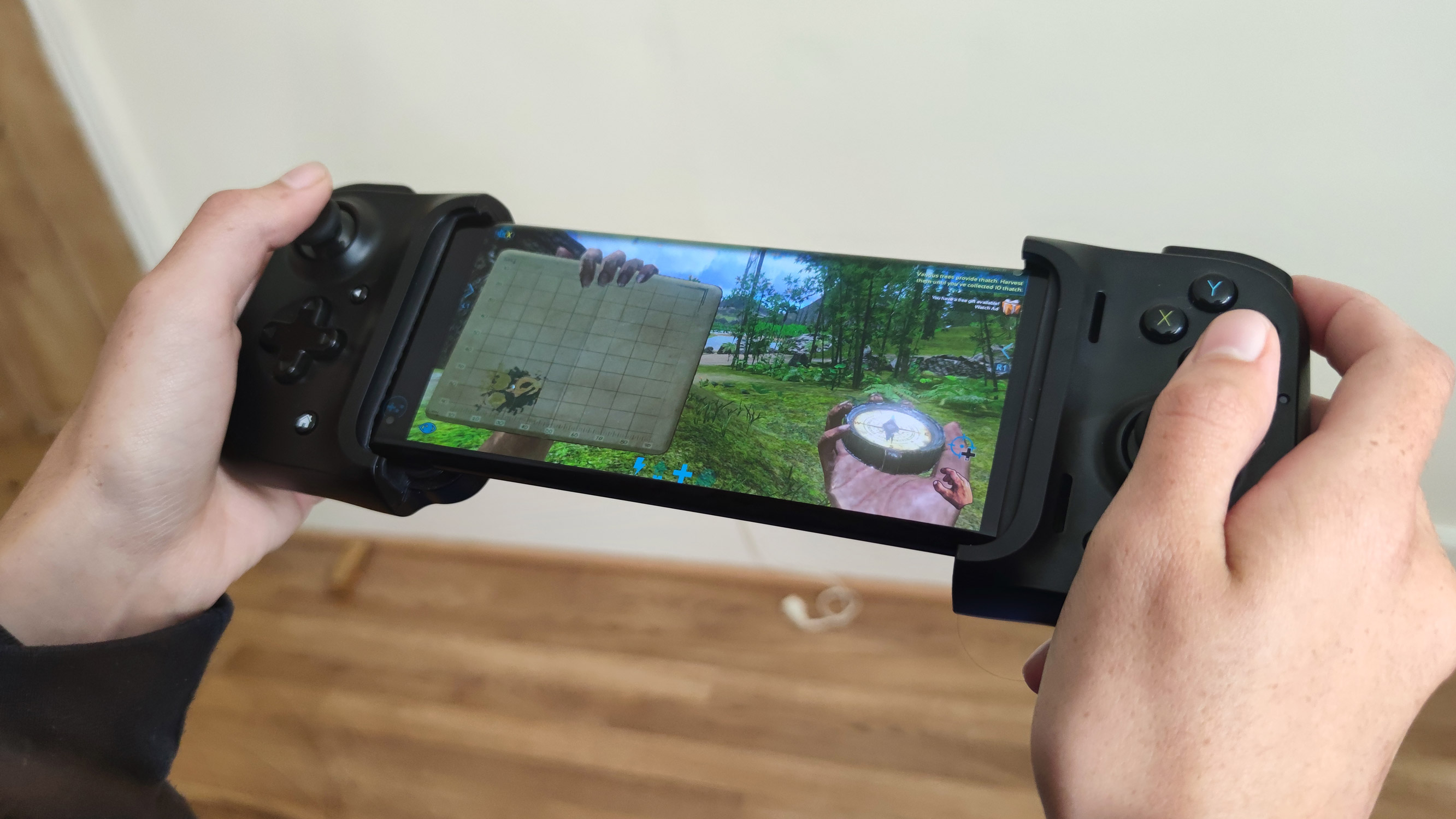
When the Razer Kishi works, it works great (even if you have to download some new games to try it, as we did). We tested a few games, and that helped show how useful it is to have a sturdy gamepad for playing games - you can really clench the controller, and hammer at those buttons, without worrying about it breaking.
Sometimes the control schemes for games can be a little confusing, as there’s no tutorial or guide, so you have to play the game a little to work out what each button does. Thankfully, many in-game tutorials are actually tweaked to reflect the change of control schemes.
In addition, in some games important functions have no key - we played battle royale title Rules of Survival and found there was no button to switch weapons, which was a little disconcerting, so you will have to touch the screen now and then. In addition, sometimes the buttons can feel arbitrary, or unnatural, a problem that would be solved by mapping your own controls.
In some games the controls were perfect, and when we played ARK: Survival Evolved we quickly forgot this was a mobile phone port of the game as it felt like we were playing on console. This highlighted how useful the Razer Kishi can be when it’s working as designed, and it’s just a shame you won’t get this experience on all mobile games.
Should I buy the Razer Kishi?
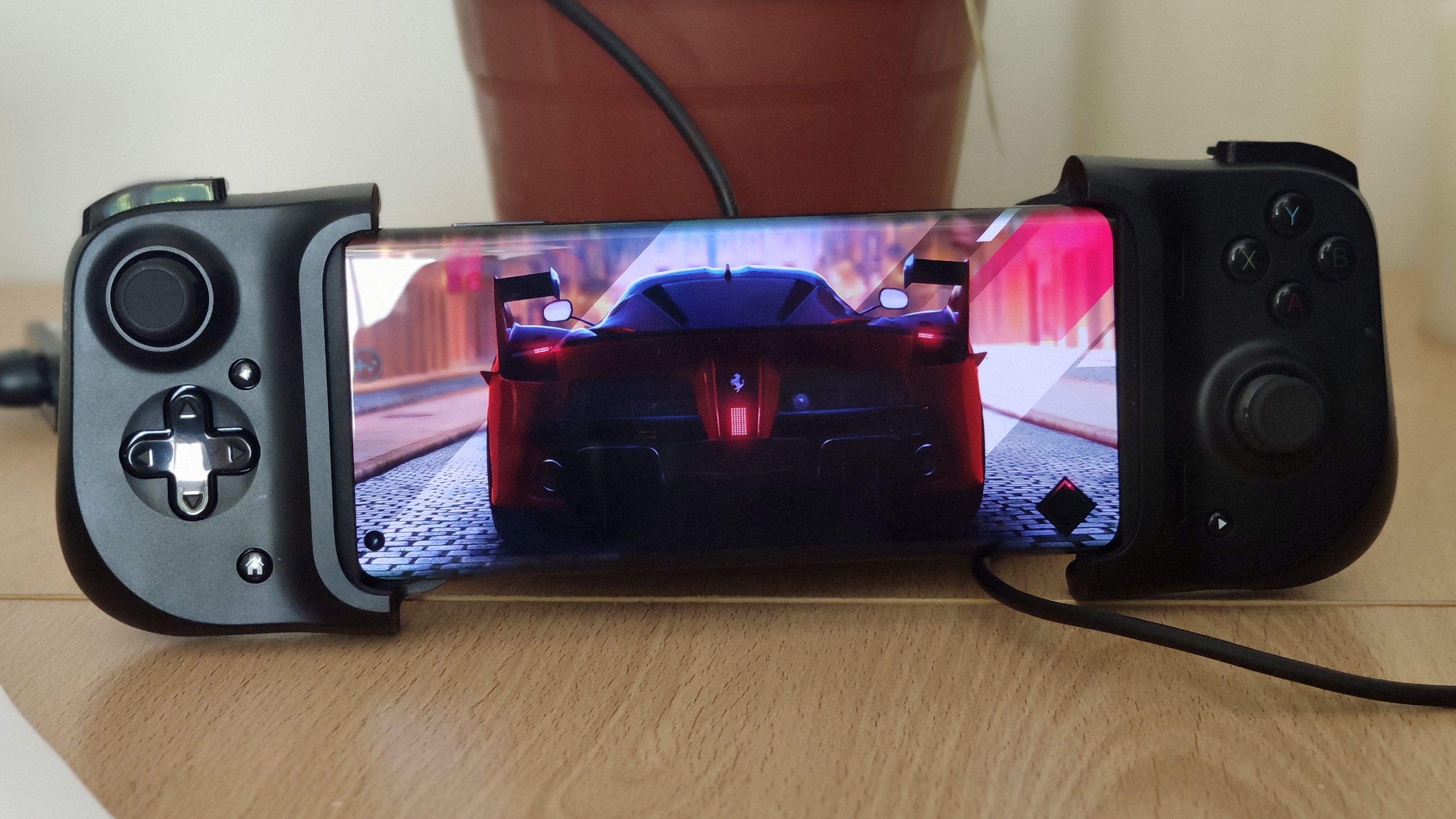
Buy it if:
You like the games in the Razer Kishi’s compatibility list
If you could comfortably play games within the Kishi’s compatibility list, the Kishi is a great buy, as it elevates the gaming experience when you’re using it. This includes those who want to play game streaming services on their phones.
You need a sturdy controller
The Razer Kishi feels more durable and hardy than most competitors, which is a blessing given many smartphone gamepads feel frail. The Kishi likely won’t break on you or crumble if you leave it in the bottom of a bag.
- Check out our Razer promo codes to get the best deal on your next purchase.
Don't buy it if:
Your array of games is too wide
If you don’t think you can stick to the Razer Kishi’s select list of games, you might find better use from another mobile gamepad which will let you map the buttons yourself, as you can use it in loads of different games.
You want an affordable controller
The Razer Kishi sits at the high point in the mobile controllers price spectrum, and if you don’t think its perks are necessary for your enjoyment and just want a cheap piece of kit, you likely don’t need the Kishi.
First reviewed: June 2020

Tom Bedford joined TechRadar in early 2019 as a staff writer, and left the team as deputy phones editor in late 2022 to work for entertainment site (and TR sister-site) What To Watch. He continues to contribute on a freelance basis for several sections including phones, audio and fitness.
